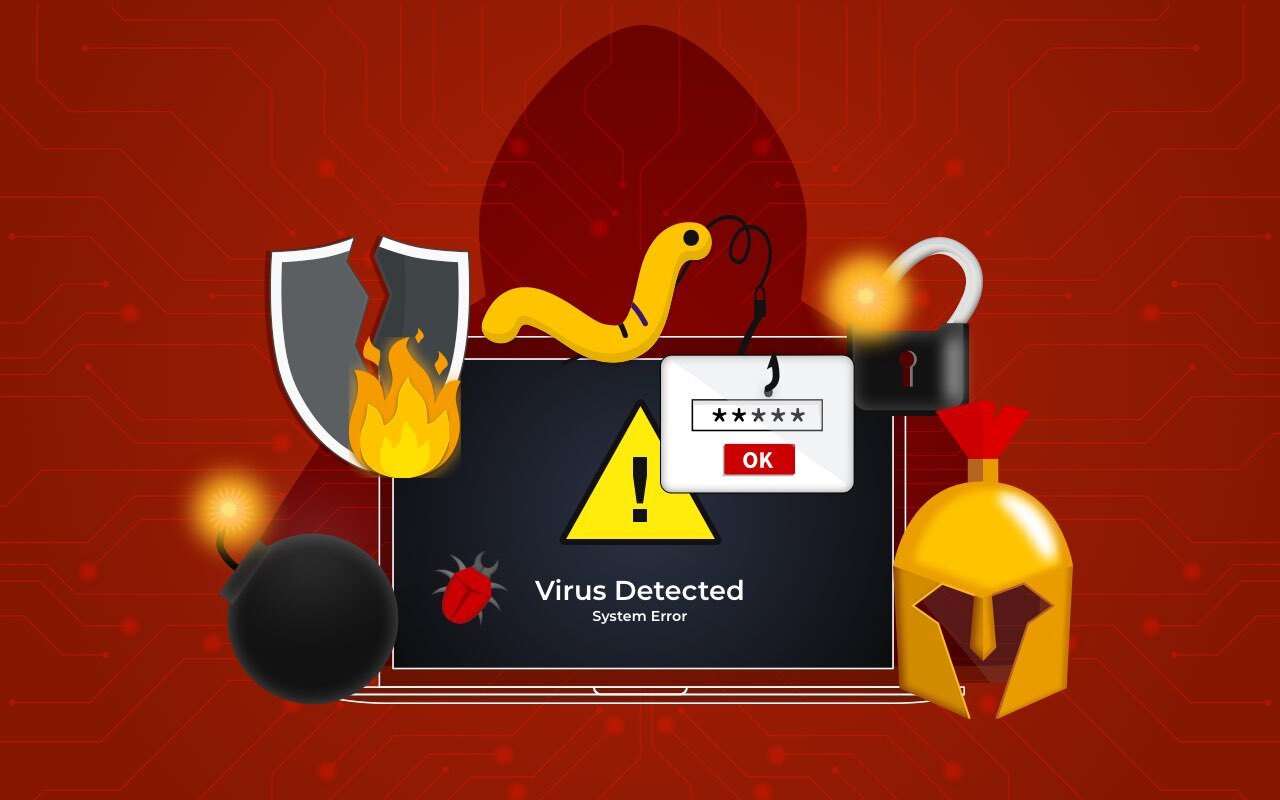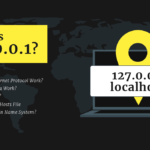Something seems off with your device, and you have a suspicion why: you might be infected with a computer virus. But don’t panic. Before taking any rushed actions, it’s important to understand what you’re dealing with. The world of computer viruses is vast and complex, much like the diverse flora and fauna of our planet. So, take a moment to learn about the problem before you start addressing it.
What is Computer Viruses?
A computer virus is a type of program that when executed modifies the other existing programs. What it does is that it replicates itself and inserts its code. The areas of the program affected in such a way by the malicious program are said to be infected.
Some computer viruses can steal your data, or encrypt your files to demand a ransom. The other kinds of malicious programs like cryptominers make your PC completely unusable. Not to mention that there exists quite an aggressive form of malware that once gets on the computer destroys the data with no recovery possible.
How to Detect a Computer Virus: Pay Attention
Despite the myriad of computer viruses existing out there in the world you will know when you get infected with some of them. Because in case of a computer infection, everything that doesn’t work properly may hint at it. But more precisely it is the following:
- Browser lags or makes unwanted redirects;
- You noticed that from your account has been sent emails that you clearly remember you didn`t write and send;
- You also noticed that the hard drive seems to be working overly when you even don’t do that much;
- New unknown applications appeared without you actually downloading them;
- Unexpected pop-up windows started to annoy you increasingly;
- The system began frequently to crash and message error;
- You started to have missing files;
- You also started to have shutting down or restarting system;
- Your computer performance significantly slows down (it takes too much time to start up or open programs);
- If your laptop’s battery is draining quickly, it could be a sign of malware running in the background. Malicious software can use a lot of your computer’s resources, causing your battery to deplete faster than usual, even when you’re not doing anything demanding.
- Antivirus programs or firewalls don’t work or work problematic.
Prevent Computer Viruses
Of course the old rule says it’s better to prevent a problem than deal with it. In the case of computer safety and security, the same rule also applies. Bad security hygiene makes the way for various kinds of viruses to infect your computer and interfere with its work. For the responsible user, cyber security hygiene is one of the top priorities if not the first. Make yourself a note to always keep up with the next points:
#1. Have additional security solutions.
Apart from having your main antivirus and firewall, consider buying another antivirus or firewall. Just in case the main security solution fails you will always have the backup of your security tools.
#2. Make regular Backups.
Make it a habit to do regular backups of all important data you have on your computer. You can store it securely in the cloud or on the hard drive. In case of a compromise you won’t get your data completely lost.
#3. Use a firewall.
If you have some antivirus solution it doesn’t necessarily mean you have a firewall. But both PCs and Macs have pre-installed firewall software so make sure you have that activated on your computer.
#4. Use antivirus software.
There’s not that much to say that`s the most essential thing in your cybersecurity. Don`t leave yourself without an antivirus solution at all.
#5. Use strong passwords.
Strong password will consist of symbols, letters, and numbers and is at least eight characters long. And don`t reuse your username and password because once a hacker obtains them they can access all your accounts you have the same username and password on.
#6. Keep Everything Up to Date.
Just saying, if you have the latest version of the software it means you have a little possible percentage of being hacked. Companies like Oracle and Microsoft regularly do their updates to eliminate the bugs that hackers have been already exploiting.
How to Remove a Computer Virus?
So if you suspect that you have a virus on the computer take the steps below immediately to remove the threat:
- Update your antivirus. Before you do a scan check if your antivirus solution has the latest update. Software vendors regularly do the updates adding to the list of new discovered in the wild or lab threats. If you have not done it yet your antivirus solution may not detect the virus that has infected the computer.
- Disconnect from the internet. It will be a good idea to disconnect your computer from the internet as some viruses use the connection to do their malicious work. Once you have done it you can proceed further.
- Do the reboot of your computer into safe mode. In the safe mode you can remove the virus without it returning. Because in some cases malware tends to return. But this mode leaves only the essential programs to work while disabling all others and of course, it will stop the virus.
- Delete any temporary files. Some viruses initiate when your computer boots up. You may get rid of the virus if you delete the temporary file. But the advice will be not to rely on the deletion and proceed further to have the full proper deletion process.
- Delete or quarantine the virus. After a scan is finished you can delete or quarantine the found file. Having done the step, run another scan to make sure there’s no malware left.
- Reboot your computer. Simply turn your computer on. It doesn’t need to be in Safe Mode any longer.
- Change all your passwords. If you fear that your passwords may have been compromised, change on all accounts the passwords.
- Update your software, browser, and operating system. By doing so you will ensure that hackers cannot exploit the same vulnerability again.
Types of Computer Viruses
Out of the variety of viruses there are some most common ones. The possibility that it’s this particular virus has got onto your machine is very high. Because they are widely spread it won’t take too much effort to get rid of one of them.
But don’t underestimate them the sooner you detect a virus and erase it the better. So once you know the cause of the problem it should be the matter of time to successfully deal with it:
- Trojan Virus. At first site a seemingly legitimate looking program but once on the victim’s machine will secretly do its primary job to steal, disrupt or damage the user`s data or network. Trojan can’t replicate itself. A victim should start the execution of it.
- Ransomware. A malicious software that encrypts files and keeps them locked until the ransom is paid. All the encrypted files receive “.encrypted” extension.
- Macro Virus. A computer virus written in the same macro language as Word or Microsoft Excel. It works with these software applications and doesn’t depend on what OS the victim has. If a macro virus infects a file it can also damage other applications and the system.
- Bootkit Virus. This virus infects the boot sector and executable files simultaneously. Most viruses infect only one thing either the boot, system or program files. Because of such a double functionality the virus causes much more damage than any other.
- Browser Hijacker. A malicious software that will change browser`s settings, appearance and its behavior. Browser hijacker creates revenue by dircting users to different websites and constantly showing pop up windows forcing users to click. Apart from such “innocent” things the virus can also collect the victim`s data or do the keystroke logging. Remove it as soon as you notice any changes you didn’t actually remember to make to your browser.
Find The Best Computer Virus Protection
It won’t be wrong to say that any antivirus protection is still protection. But of course, the question is how good that protection is. The best thing to do to know which antivirus software has the quality of protection is simply to try it out.
In this way you will see the work of the product in action and will decide for yourself if what this or that antivirus software vendor proposes is enough for your needs.
The search for the ideal antivirus solution won’t be hard if you know what the thing should do. The antivirus solution searches detects, and removes the malware. It’s the basic three-part system of any program that calls itself an antivirus solution. Additionally, most antivirus software has the feature of removing or quarantining the offending malware. Also an antivirus solution works on two principles: either way it scans the programs upon their uploading or checks those already existing.

Download and install Anti-Malware by clicking the button below. After the installation, run a Full scan: this will check all the volumes present in the system, including hidden folders and system files. Scanning will take around 15 minutes.
After the scan, you will see the list of detected malicious and unwanted elements. It is possible to adjust the actions that the antimalware program does to each element: click "Advanced mode" and see the options in the drop-down menus. You can also see extended information about each detection - malware type, effects and potential source of infection.

Click "Clean Now" to start the removal process. Important: removal process may take several minutes when there are a lot of detections. Do not interrupt this process, and you will get your system as clean as new.

Now that you’ve secured yourself with knowledge, try to secure your computer with Gridinsoft Anti-Malware. Not a bad start in testing out the various antivirus solutions in the search for that special one.





This post on identifying computer virus signs is a gem! Clear, concise, and incredibly helpful. Thanks for shedding light on such an important topic. Keep up the great work!